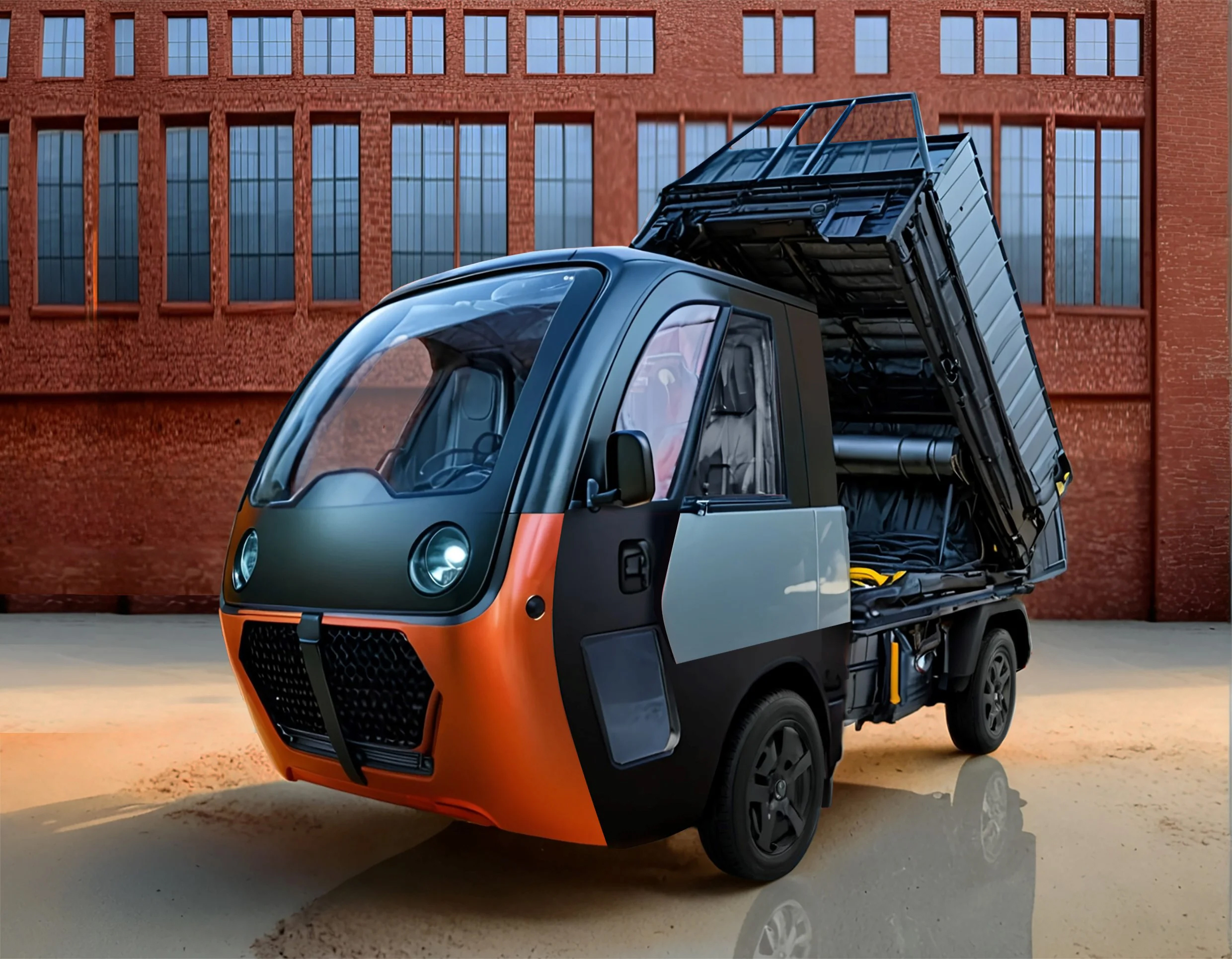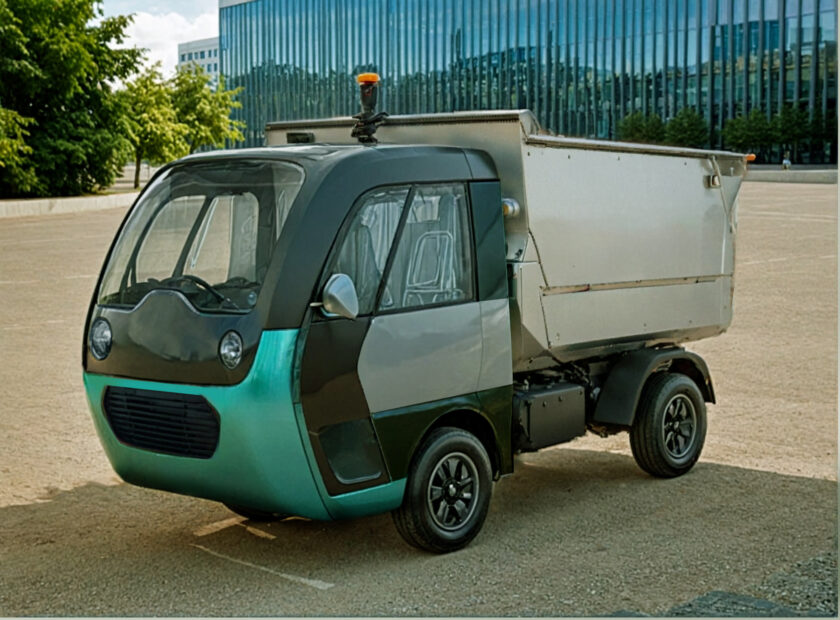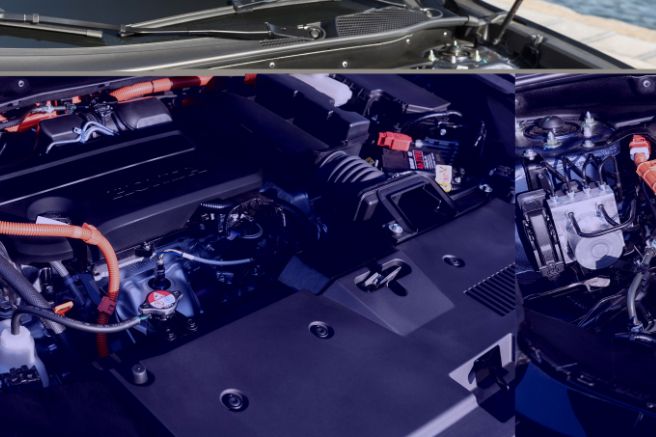Born from the collaboration between Bieffe Project and the University of Modena and Reggio Emilia, “Mimì” is an innovative compact vehicle designed to meet urban logistics needs. It is offered with either full electric or hydrogen fuel cell propulsion, supported by solid-state supercapacitors. Despite being a technological excellence, its commercial future remains uncertain

Compact commercial vehicles are a fundamental solution for urban transport and for the operations of small and medium-sized enterprises. In this segment, particularly in Italy, the Piaggio “Porter” and Piaggio “Ape” have made history in commercial mobility thanks to their versatility, compactness, and adaptability to a wide range of local needs.
Introduced in 1948, the Piaggio “Ape” emerged as a three-wheeled evolution of the “Vespa” and quickly became a symbol of Italian commercial mobility, thanks to its compact design and high load capacity relative to its size. It was also competitively priced, which made it an indispensable vehicle in many sectors—from craftsmanship to small-scale logistics to agriculture—efficiently addressing the needs of the Italian territory, characterized by historical city centers with complex road networks and rural areas with uneven paths.
In the 1990s came the “Porter,” another compact vehicle from Piaggio designed to suit a variety of missions, based on a four-wheel architecture better suited to modern demands. This vehicle now inspires “Mimì,” a new compact commercial vehicle developed entirely in Italy by Bieffe Project and equipped with innovative technical solutions, particularly in terms of its powertrain.

“Mimì” is in fact built around two different types of electric propulsion. The base version uses a more traditional battery-powered system, while the more advanced option features a hydrogen fuel cell paired with solid-state supercapacitors. These two systems are not in competition but are intended to meet different operational needs, both ensuring zero environmental impact.
The fully electric version uses a squirrel-cage rotor induction synchronous motor—a reliable, well-tested technology offering high efficiency. It delivers up to 15 kilowatts of power and a maximum torque of 350 newton-meters. This is supported by a 25-kilowatt-hour lithium-ion battery operating at 144 volts, enabling a range of around 230 kilometers under the WLTP homologation cycle. Charging time varies depending on the available power source: 171 minutes with a 7-kilowatt charger, 109 minutes with 11 kilowatts, and only 55 minutes with a 22-kilowatt charging station. The rear-wheel-drive system uses an electrified axle integrating both the motor and differential.
Alongside this version is the hydrogen-powered one, which uses a proton exchange membrane fuel cell, supported by solid-state supercapacitors and an almost 8-kilowatt-hour lithium-ion battery also operating at 144 volts. A 27-liter hydrogen tank stores fuel at 350 bar pressure, offering a range of around 240 kilometers, with refueling possible in just a few minutes using a standard SAE J2600 nozzle.
As the only vehicle in its class offering such an advanced propulsion system, “Mimì” boasts up to 30% greater efficiency than typical hydrogen fuel cell vehicles. This is thanks to the integration of supercapacitors, a battery, and an electronically managed control system that also includes regenerative braking.
As such, “Mimì” is not only technically innovative but also an outstanding example of Italian manufacturing excellence. It is the product of a collaboration between Bieffe Project and the University of Modena and Reggio Emilia and is produced entirely within the Emilia-Romagna region.

The vehicle also features modular design: in addition to being flexible and adaptable to various configurations, it is engineered to allow future conversion from pure electric to fuel cell electric, thanks to a specific kit—once hydrogen refueling infrastructure becomes more widespread.
This project, which has already received regional funding and required an initial investment of €750,000, is now moving toward industrialization, with the goal of bringing “Mimì” to market by 2026. The aim is to contribute to the energy transition envisioned by the European Union—a goal now threatened by a series of unforeseen geopolitical and military developments.
This very uncertainty leads to the concern that, despite its high level of innovation, the market may reject the vehicle—especially considering that this segment has historically based its success on simplicity and low costs.
Two-ton load capacity
From a dimensional standpoint, “Mimì” features a 2,000-millimeter wheelbase, a total length of 3,700 millimeters, and a width of 1,340 millimeters. With a turning radius of 3,500 millimeters, it can easily maneuver in even the tightest urban spaces or inside buildings—a capability further enhanced by its zero pollutant emissions and near-silent operation.
The curb weight is 930 kilograms, while the maximum permissible weight approaches three tons, resulting in a load capacity of nearly two tons. Both the driver and cargo benefit from front MacPherson suspension with double-acting hydraulic telescopic shock absorbers, while the rear axle features interconnected wheels with double-acting hydraulic telescopic shock absorbers and semi-elliptical leaf springs.
The braking system includes 210-millimeter front disc brakes and 190-millimeter rear drum brakes, with an electric parking brake.
Title: Bieffe Project Mimì: technological excellence in search of a market
Translation with ChatGPT



